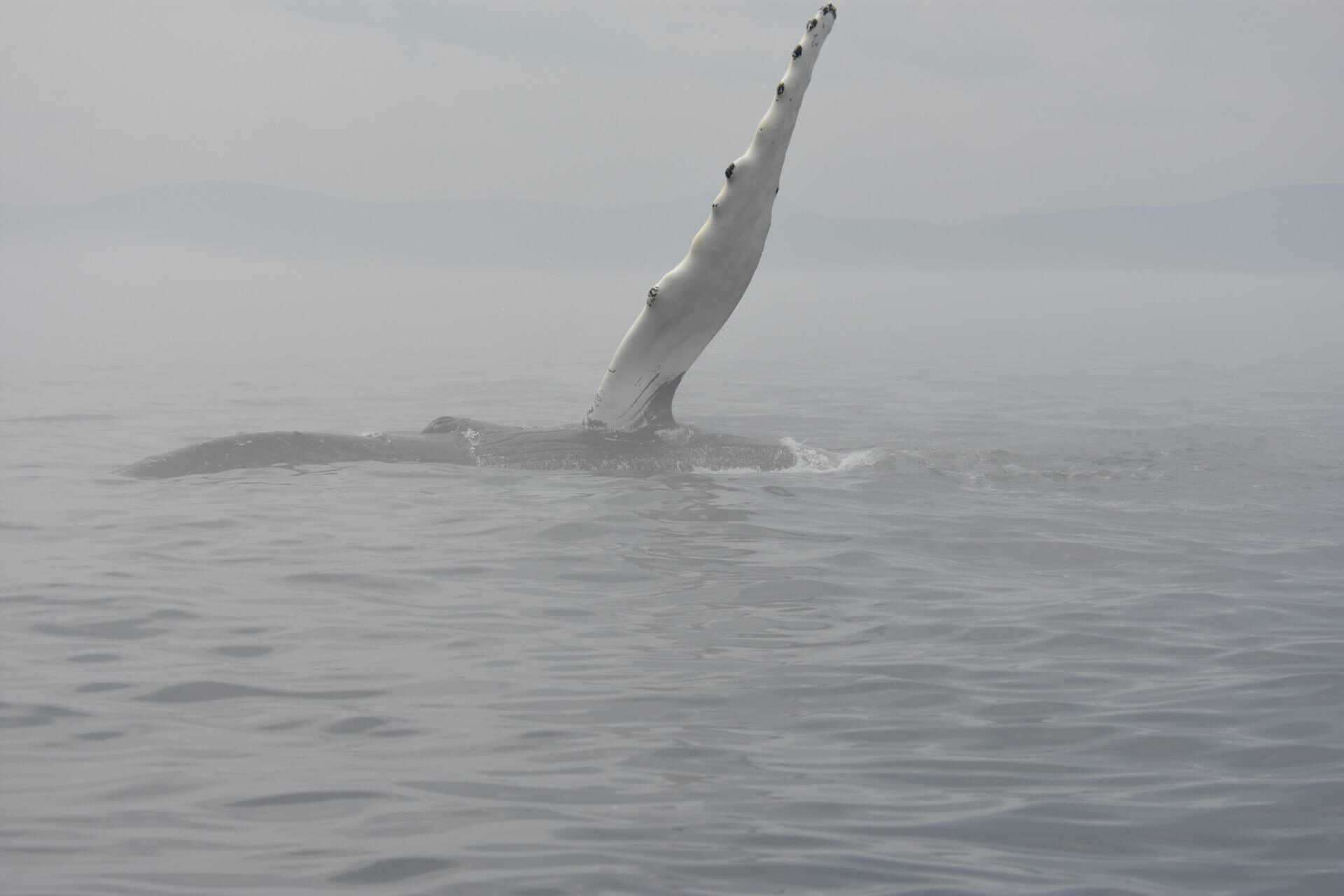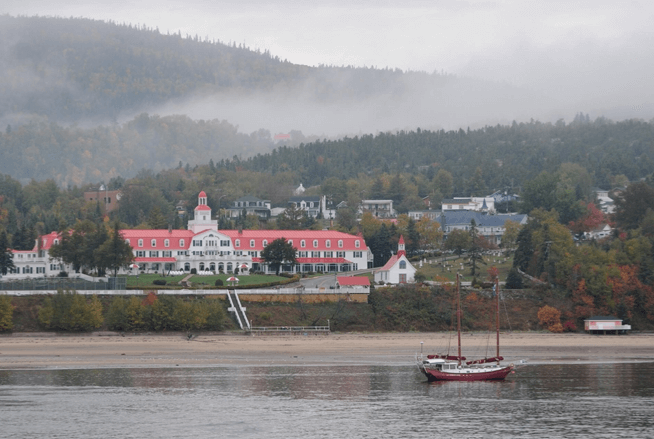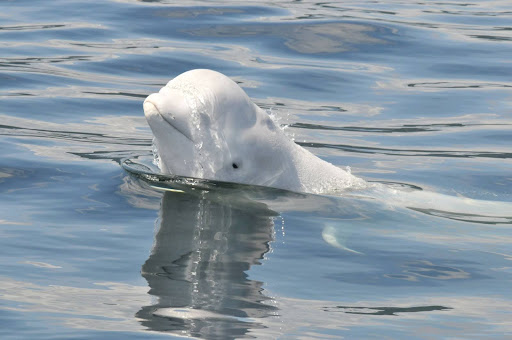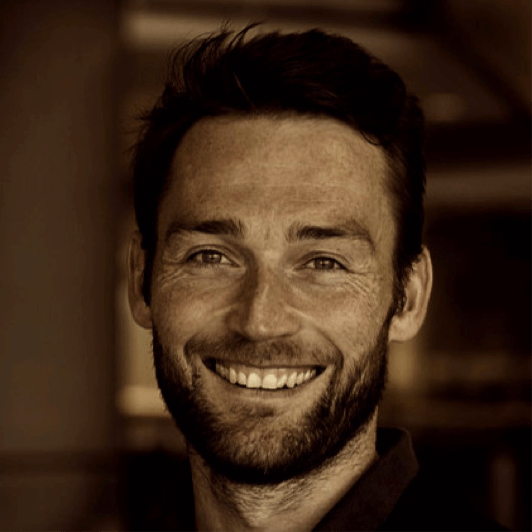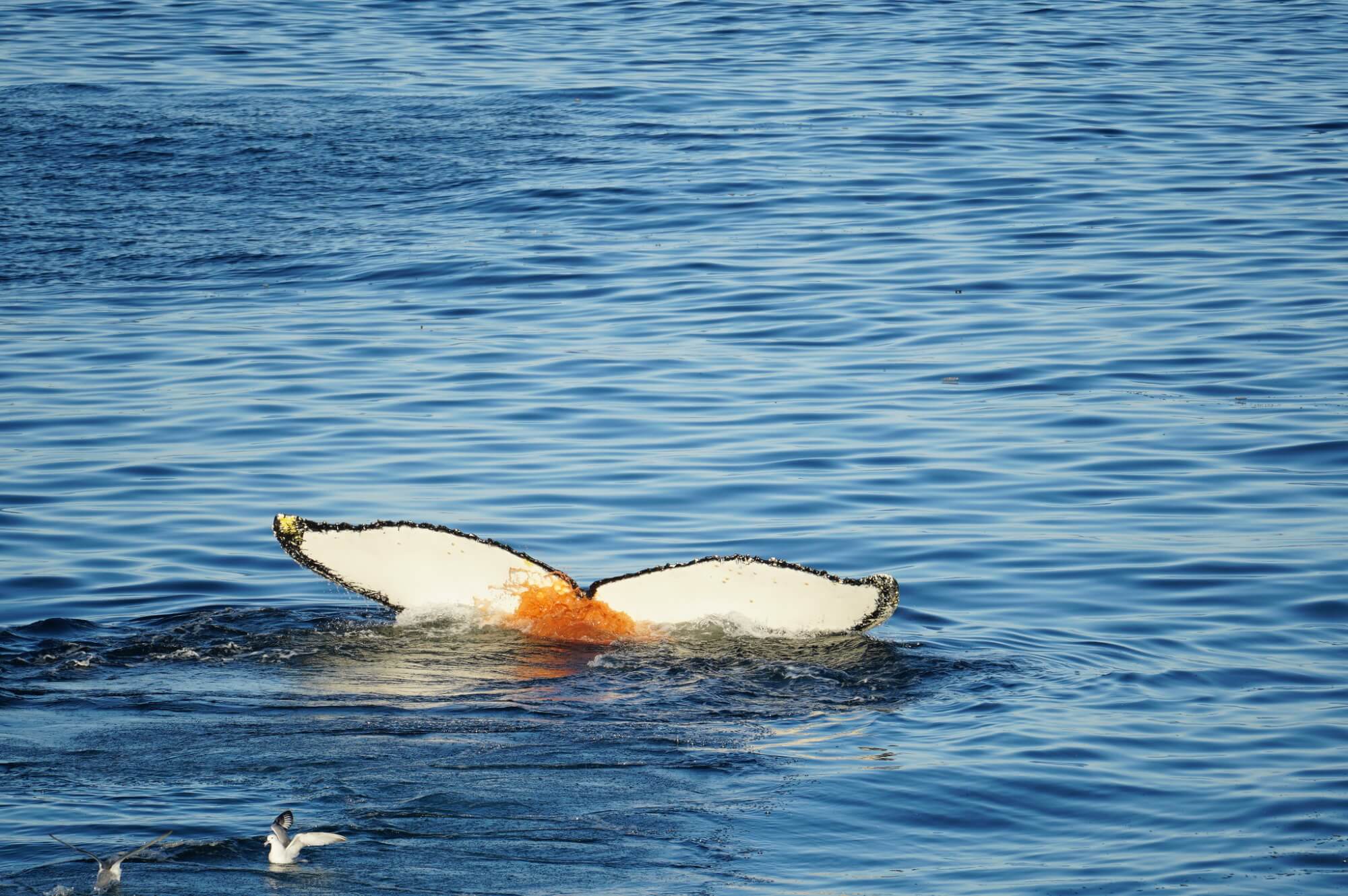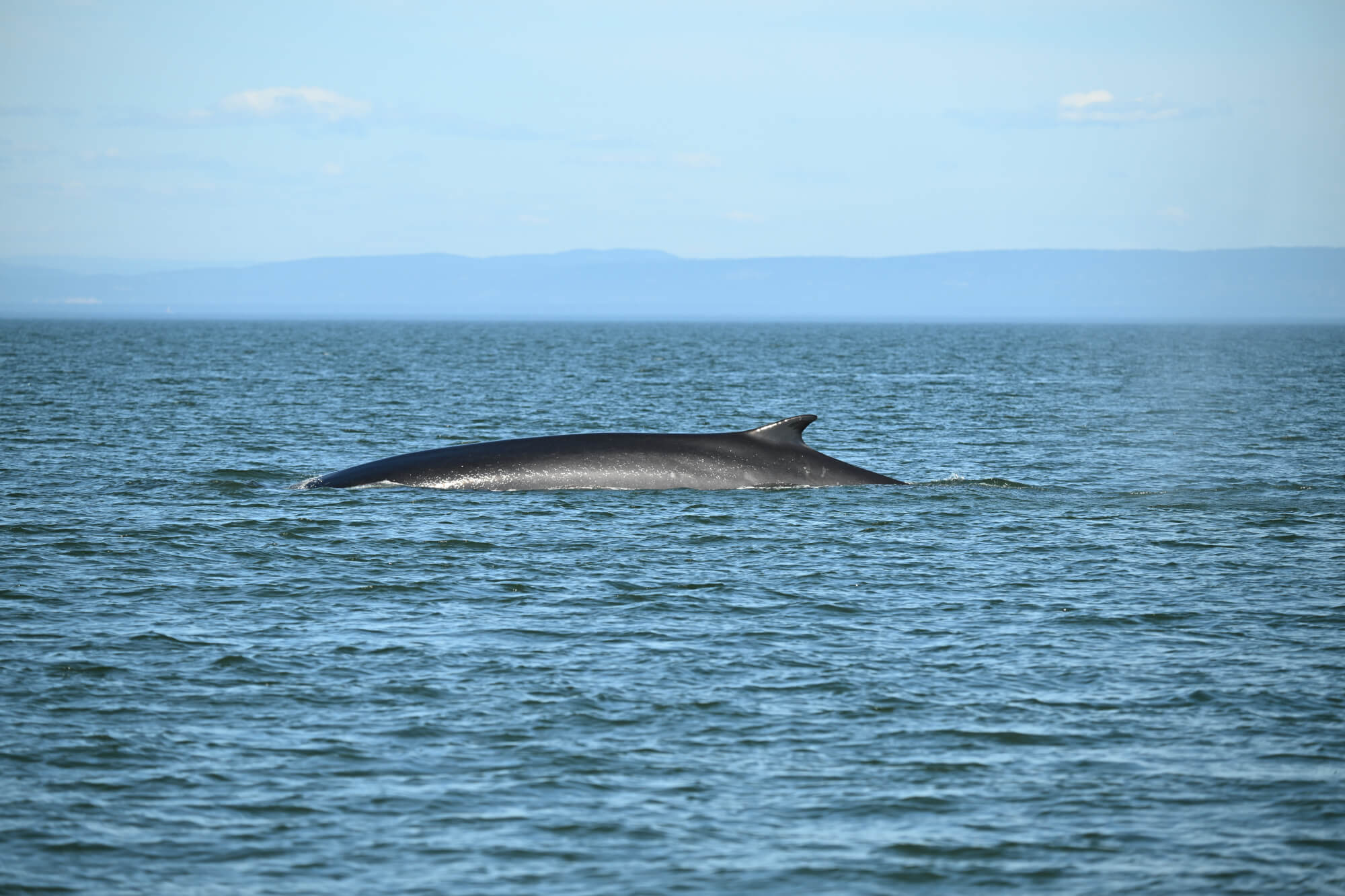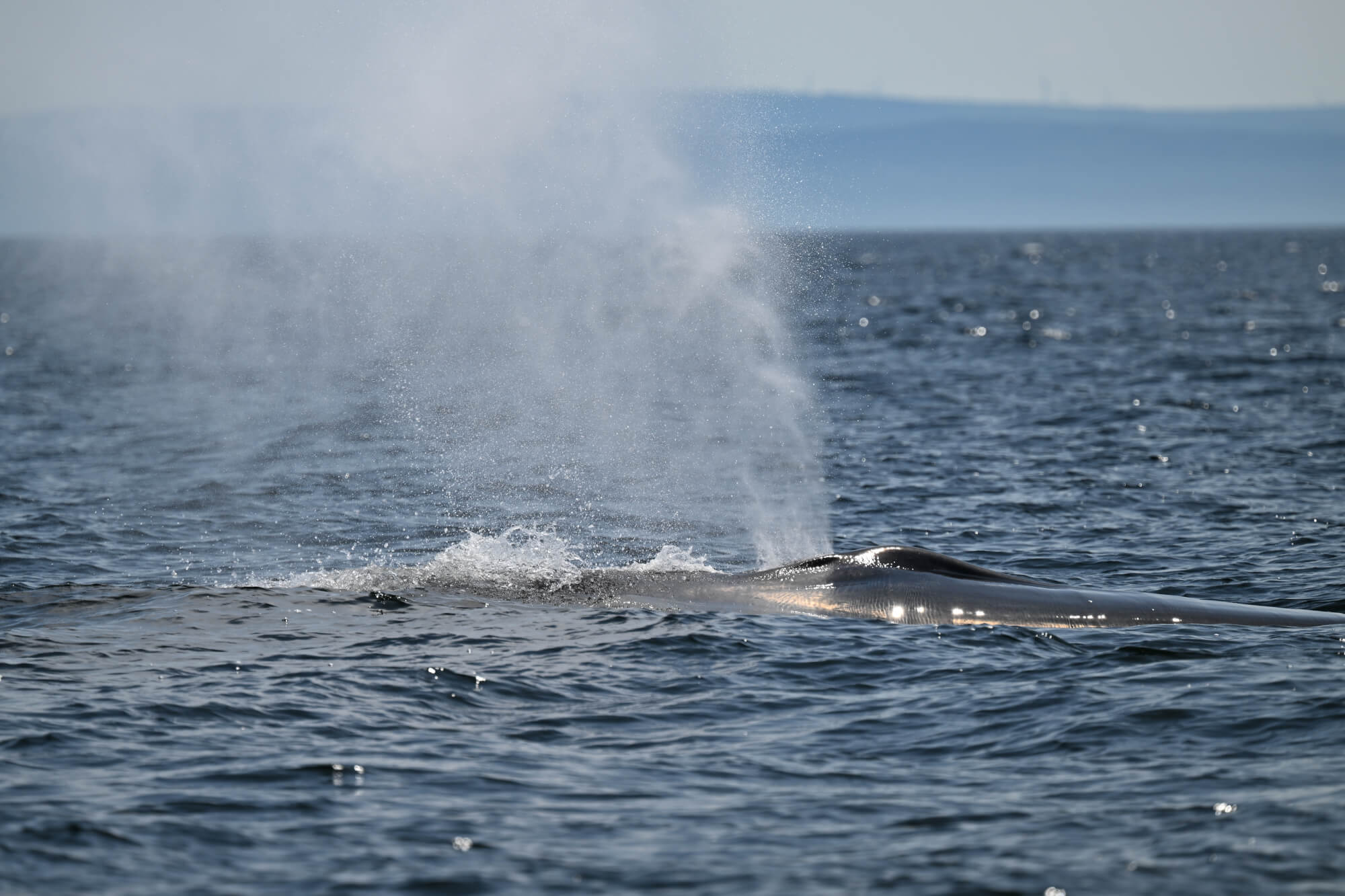We took advantage of renowned anthropologist David Jaclin’s visit to Tadoussac with his research team at the start of the season to speak with him. With his extensive writings on the relationships between humans and animals and his comprehensive views of wildlife tourism, we couldn’t let this opportunity pass us by!
David Jaclin is the director of Humanimalab, a research laboratory affiliated with the University of Ottawa. The focus of their studies? “Everything that isn’t human, but that makes us human, with a particular emphasis on water,” he explains. In this article I share the most interesting answers that came out of our interview. This interview sheds new light on these marine mammals we cherish so much and the relationships we share with them.
Let’s talk beastness
Benjamin In your PhD thesis, you address the question of animals as a key element of our economies and cultures, which is the very definition of beastness. This leads to many reflections on the impact of tourism that revolves around animals as its primary focus. Towns like Tadoussac are living and dynamic proof of this. You specifically address the issue of zoos, aquariums, and “jungle backyards” – where humans and “used-to-be-wild” animals live in domesticated conditions – but do you see similar reflections with parks like the Saguenay–St. Lawrence Marine Park?
David Jaclin Animals are often a form of subsistence… So, the fact that Tadoussac lives off animals isn’t surprising since this is also subsistence. But we’re no longer talking about subsistence strictly in the sense of food. We are still living off animals, but in a different way. Beastness is a play on words related not only to this kind of business, but also to the animal trade. What I was trying to do with this was to remind people that business is first and foremost a relationship, and that this relationship is never exclusively economic. What does it mean to trade with animals rather than just trade in animals?
I tried to unpackage our relationships, which have historically been predominantly utilitarian. So animals are perceived and treated essentially for what they can provide us, much akin to a predator-prey relationship. But what does it mean to enter into a relationship with a living being, not for what it can provide me, but perhaps as well for what thе animal is, irrespective of our “needs”?
There’s also this story about commercial relationships. Such relationships support the economies of towns and communities, draw visitors and make people want to stay. We capture the whale’s life form, but we also capitalize on it. We create value. In a way, the whale has no say in this story due to the balance of power. What happens to those tourists who come to see whales? What do they take away from their encounters? Do they leave as satisfied customers? Or do they leave as people who will now dream differently?
Could we bring back belugas if they ever became extinct?
B In 2018, in your publication in Animals, Animality, and Literature, you offered a very interesting take on the wave of interest in de-extinction that emerged in the early 2010s. Do you think that discussions about bringing species back from the dead using their DNA distract us from the importance of protecting species before they disappear? Isn’t it a little reassuring to think that we could bring back extinct species if current conservation methods fail?
DJ For me, it’s not comforting; it’s actually very worrying. What will this animal do that we might eventually manage to resurrect? Any life form is first and foremost about relationships. You can bring back an organism with DNA using a whole variety of techniques, but what will this life form do? What will it attach itself to?
So yes, it’s comforting for may people to think that we haven’t actually lost our world and that we could always bring it back. But for me there’s something strange and worrying about that because it’s false. False in the primary sense of the word, because the world of yesterday won’t return, no matter what. If you want to bring back yesterday’s world tomorrow, that means you’re not looking at what you’re doing today. It’s more like a massive collective denial taking hold behind these promises to bring back what we drove to extinction…
Let’s dream about whales a little!
B I really enjoyed a few of your paragraphs on dreams. At GREMM, we use storytelling and history a lot to create a sense of connection with the various species of the St. Lawrence. It goes without saying that most of the people around us dream of seeing whales on a daily basis. With the disappearance of vulnerable species, you mentioned that not only are dreams about animals at stake, but also dreams by means of animals. What do you mean by that?
DJ When we think of an animal, we essentially think of its form. What we forget is that it’s a form of life. The whale is the life form people come to Tadoussac in search of: It’s a visual thing, but these animals are also universes. So an endangered species isn’t just the form that will no longer be there, it’s also the entire universe that this form inhabits and through which these universes (of perception, meaning, actions) persist. A good part of the dream or fascination we may have for these animals isn’t limited to their form, but rather what these forms are capable of, what they do and enable while they’re alive. What underwater acoustic world would we lose if whales were to become extinct?
So the story of dreams is cool. Because we can see that in dreams we can allow ourselves to make somewhat bizarre projections. We all want to get close to the animals, but we must not allow ourselves to approach them haphazardly. There are rules, there are desires, and there are things that are prohibited. I feel like with the disappearance or loss of biodiversity, there is also a loss of sensitivity at stake. It’s a loss of worlds that would make life on land (and on the water or at the water’s edge) much less interesting, less rich, and less abundant! There is no life that is strictly human. But there are human lives that render invisible everything that is non-human but allows us to survive, like water or dreams.
To dream only of humans would be a bit sad, wouldn’t it?


